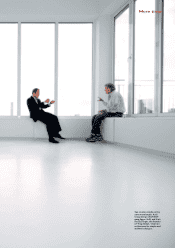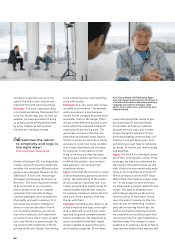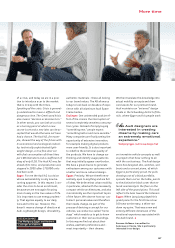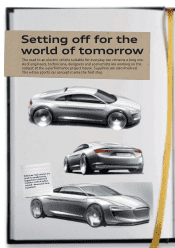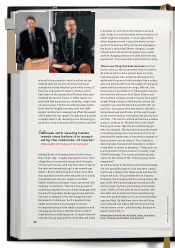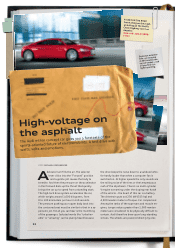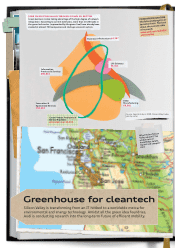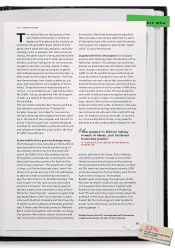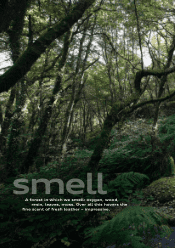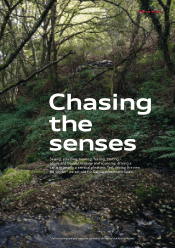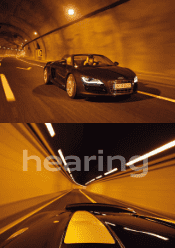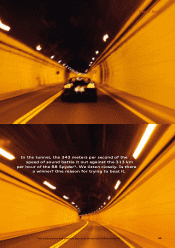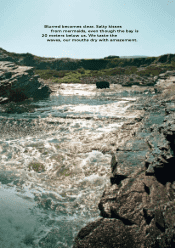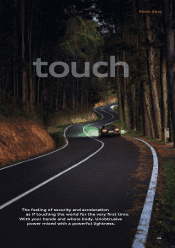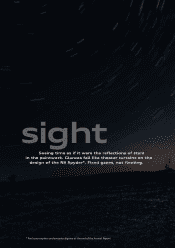Audi 2009 Annual Report Download - page 98
Download and view the complete annual report
Please find page 98 of the 2009 Audi annual report below. You can navigate through the pages in the report by either clicking on the pages listed below, or by using the keyword search tool below to find specific information within the annual report.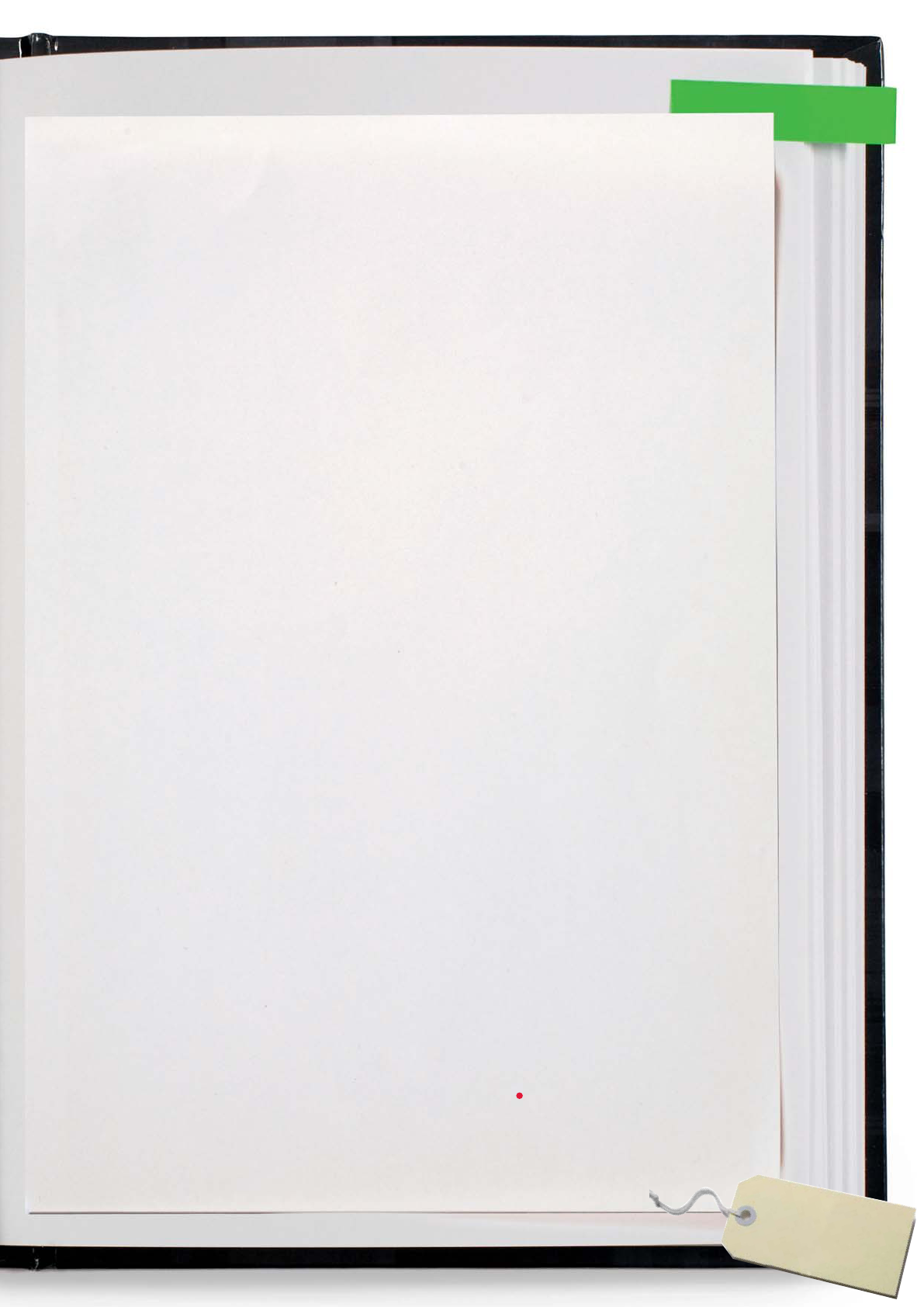
ore time
he new building on the campus of the
elite Stanford University in California
appears at first glance to be a simple car
workshop. Roughly 800 square meters of work-
space, seven spots with pits and jacks, and a few
meeting rooms in between. But looks can be de-
ceiving. The green future is being assembled here
bolt by bolt and line by line of code: autonomous
vehicles, artificial intelligence for low-emissions
navigation and other exciting cleantech ideas.
Stanford’s CarLab brings sociologists together
with software engineers and solar technicians; ro-
botics experts with engine developers. The think
tank demonstrates how closely academics, pio-
neers and corporations work together in Silicon
Valley. “Everyone knows everybody else and is
curious – it’s a constant cycle,” says Valley expert
Paul Saffo. CarLab, established with the support
of Audi, is a symbol of the green evolution in
Silicon Valley.
The conurbation between San Francisco and San
Jose has been considered an IT hotbed for
decades. However, bold ideas for new environ-
mental and energy technologies have been ripen-
ing in the shade of the computer and Internet in-
dustry. Projects range from computer-designed
microbes for new biofuels to ultra-thin solar cells
and software to make the power grid or the flow
of traffic more efficient.
In the middle of this green technology mecca,
the Volkswagen Group operates an internal think
tank dedicated to the interdisciplinary study of
the mobility of tomorrow. The Electronics Re-
search Lab (ERL) in Palo Alto employs around
50 engineers and researchers searching for new
ideas and innovation partners for Audi and the
other Group companies. “The people here invest
in ideas, not finished business plans, even if the
chances of success are only 1:20. The willingness
to take risks leads to astonishing innovations,”
says the lab’s director, Dr. Burkhard Huhnke. “We
want to get in on this cycle as soon as possible
and drive it forward.” One important project at
the lab located in the immediate vicinity of Stan-
ford is the “Audi Clean Air” research program that
was established in 2007 as a multi-year collabo-
ration with Stanford University and the University
of California (UC) campuses at Berkeley and River-
side. A team under Riverside professor Matthew
Barth is working together with the ERL on naviga-
tion systems which aim to reduce emissions and
fuel consumption without significantly extending
T
COPY/STEFFAN HEUER
23%
Growth in green jobs from
2005 to 2007
Source: Silicon Valley Index 2009
driving time. Barth has developed an algorithm
that processes consumption data from 15 years
of laboratory tests with current road information.
The program can suggest an appropriate “green
route” in just a few seconds.
Coupled with this is the project for intelligent
engines at UC Berkeley under the direction of Pro-
fessor Karl Hedrick. The software can look three
kilometers ahead and uses information about the
route, change in elevation, the current flow of
traffic to set the optimal torque and best speed
using the vehicle’s adaptive cruise control. Both
innovations can each reduce fuel consumption by
between five and seven percent, and according to
Hedrick are just the first of a number of efficiency
improvements still to come. The two academics
next want to address green navigation and engine
control on smaller streets. In contrast to express-
ways, there is little real-time data available for
urban and interurban roads, but these routes also
harbor substantial savings potential once vehicles
can communicate with each other and traffic sig-
nals, for example. Just as important, if not more
so, is the development of new, more powerful
batteries and the corresponding software for the
electric vehicles of the future. Silicon Valley is
very fertile ground for innovation in this field
thanks to prominent startups and the existing
technical expertise from the PC industry. An inter-
nal ERL team has been working since early 2009
on the development of a new battery pack for the
Audi e-tron concept car, for example.
Besides green technology, the engineers in Palo
Alto who develop for Audi are also very interested
in the people behind the wheel. Together with
Stanford, they have developed a self-steering
Audi TTS with which they hope to fully exploit the
potential of the driver assistance systems. It is
hoped that the technology will later be able to
accept route instructions, such as to drive into a
parking garage.
Steffan Heuer is the U.S. correspondent of the business
magazine brand eins. He lives in San Francisco.
“
The people in Silicon Valley
invest in ideas, not finished
business plans.”
Dr. Burkhard Huhnke, director of the Electronics
Research Lab
95


